Goodreads meta-data is 320 pages rated 4.31 by 2455 litizens.
Genre: krimi, period
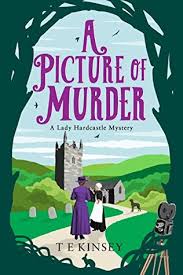
Verdict: ambiguous.
In the heart of Little England at fictitious Littleton Cotterell in 1909 wealthy Lady Hardcastle and her redoubtable retainer Florence Armstrong, the maid of all work, including sleuthing, are settled in a Midsomer picturesque village in the southwest near Bristol. Flo narrates with a sharp eye and a sharper tongue.
Then the kinematographers come to the village, and by a mischance Lady Hardcastle offers them a roof. They had been scheduled to stay at a neighboring estate but a mysterious fire in the kitchen has made that impossible.
The kinematograpers screen an 18-minute film about the undoing of a witch to the protests of Republicans who see in filums the devil’s work. Meanwhile an aggrieved rival of the kinematographers appears at the pub with a tame journalist in tow. By the way the kinematographers include the film actors four. Finally some travelling musicians pop-in to muddy the waters and provoke a tiresome double backstory. Whew! Now that the cast is assembled, the mayhem can begin.
Because the kinematograph is the work of the devil, Christian vigilantes appears to picket, to protest, and cause trouble. The local vicar has some choice words to say about such pious thuggery that reminded me of many current tiny minds. For the Vicar God takes delight in the achievements of His creation. He’s sophisticated and wise and understands the subtleties of Man’s ingenious inventions. On the other hand, the self-proclaimed pious thugs exhibit resourcefulness only in their careful selection of scriptural texts to support small-mindedness, combing misquoted Bible verses and threats of eternal damnation.
Then the morning after celebrating until late tthe screening of the film, one of the actor is found, dressed in role, dead just as his character died in the film. The villagers were agog at seeing a film for the first time to begin with and the death — of course it had to be murder — drives one and all round the nearest bend. His death confirms the Christian thugs in their many prejudices.
The well meaning local plods are lost and Bristol CID sends in Inspector who is old mates with Her Ladyship and Strongarm. Since he has many other krims on the go back in the city, he more or less delegates the investigation to Lady and Maid.
Before you can say this is nonsense the leading lady is found dead, also in-role, in Lady Hardcastle’s very own kitchen! That makes it personal!
The Christian vigilantes make Prime Suspects. Then there is an artistic rival whose has dogged the steps of the kinematograpers across the land.
Along the way there are lessons about village life, the state of film-making at the time, the hills and dales around Bristol, and an insufferable load of banter between Hardcastle and Strongarm that pads out the story near to tedium. But they do some ratiocination to sort through all the parti-coloured herrings, which are many.
 T. E. Kinsey
T. E. Kinsey
The approach is more didactic than I can usually abide but in this case the information is well integrated and tossed off in portions. However, I found the insertion of a lengthy double backstory first about the tender years of Strongarm and then the adventures of Lady Hardcastle distracting, tedious, and limp, the more so considering this is number four in the series. Likewise the two travelling minstrels who show up again are simply there to cue the backstories not to move this one forward, and their message about the menacing German is left on the cutting room floor, or should have been since it is not resolved. I expect it is a tease for the next volume in the series. Is it any wonder that some readers grind their teeth?
Category: Krimi
‘The Cardinal’s Court’ ( 2017) by Cora Harrison.
GoodReads meta-data is 320 pages rated 4.00 by 44 litizens.
Genre: krimi, period
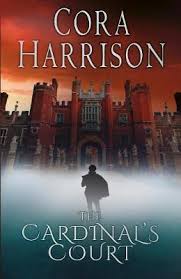
Verdict: [Not sure.]
Henry VIII together with his queen, Katharine, is in residence at Cardinal Thomas Wolsey’s folly, Hampton Court built in 1515 it has all modern conveniences, namely hot and cold running servants. Flemish tapestries to reduce draughts, decorated fire buckets at every fire place, and more. Wolsey is chief minister to the mercurial King, having built the palace to serve as a royal residence, as a diplomatic embassy, and as his own residence. Thus forty rooms are reserved for the royal party, and another forty set aside for visiting diplomats, and so on. Kitchens, stables, latrines are sufficient to service a thousand guests. Imagine that. Well maybe that is TMI.
The building is baroque and so are the people. The intrigues are many. There are rivals for the king’s favour. There are conflicts over inheritances among the courtiers. There are sexual liaisons, financial corruption, and the like. Queen Kathrine has produced no male heir, and that is a storm brewing that readers realise more than the characters with our hindsight.
It is the very cold Lent of 1522 when into this happy throng comes Hugh Mac Egan from Ireland, a lawyer sent to prepare a marriage contract for the son of his client, the Earl of Ormond. The boy, James, is a page to the Cardinal, along with eleven other youths, heirs to mighty lords of the land. James’s intended is Anne Boleyn.
She dominates much of the early going. Indeed, too much for this reader. She is described at least four times before my trigger finger got itchy and I started flicking pages whenever she appeared. Her lustrous eyes, her swaying carriage, her husky voice, her almond face, her clear skin, her gleaming hair, her ……. Enough. She is way out of James’s league but no one seems to notice that, apart from the lady herself, who has another in mind, another page at this stage, young Harry Percy who is the scion of the Earl of Northumberland, who is Midas rich. She spends a lot of time rubbing Harry up the right way.
Then, it seems during a Lentan meal with the king present, a courtier is murdered, and the circumstantial evidence points to James. Hugh undertakes his defence, in between recitations of Boleyn’s features. While much is made of the fact that the crime occurred in the king’s presence the investigation is lethargic to say the least. There is a jurisdictional dispute between the king’s sheriff and the cardinal’s over whose case it is. That has potential but since both of this officers are portrayed as dimwits, it is not developed.
Much is made of the difference between Irish and English law, but that does not effect the plot. It is simply a didactic aside.
Queen Katharine is shown to be much more than the religious zealot to which she is usually reduced in the popular culture. She is well aware of the currents eddying and swirling around the court, and offers Hugh some insightful and intelligent assistance so subtlety that he almost misses it while enumerating Boleyn’s attributes. The queen is an old hand at seeming to do nothing while doing something in a court where her every gesture is noted, codified, catalogued, recorded, reported, and analysed.
Likewise, as all powerful as Wolsey appears from afar, he is well aware that everything depends on Henry’s indulgence, and judging the limits of that indulgence is tricky from day to day with such a changeable man. Best therefore to do little by halves, always checking the wind.
One of the pillars of the krimi is the rush to judgement. A crime occurs. Officials latch onto a suspect and declare guilt. Case closed. Our hero then struggles to re-open the case and to defend the suspect. There is never much of an explanation, if any, about why the officials are satisfied to let the real culprit escape while they convict an innocent. It cannot be just incompetence else they are not worthy of the steel of our hero, so they have reasons, which usually amount to a bribe. Yet in accepting a bribe to permit a murder, they expose themselves to a like risk and more. It seldom adds up. Life can be like that but not literature.
Sometimes period krimis have too much period exposition and not enough krimi (mystery, investigation, surmise). Authors having done extensive research want to make use of all they learned and the exercise becomes didactic not entertainment. This one uses much period nomenclature, some of it Gaelic, and I was glad to have the Kindle dictionary to the ready. There is also much description of the kitchens, the corridors, and rooms, little of which relates to the crime. For the purposes of the plot we did not need to know that there were four or five kitchens, each with its own store rooms, etc., but told we are.
A few niggles about the plot remain, though I admit my speed page flicking may be the explanation. I never did figure out why Ann ‘Much-Described’ Boleyn risked so much on the spur of the moment and evidently convinced her paramour instantly to do the same almost. Nor was I sure what the point was of the torture and murder of the servant, while locking our hero in a box. Did the murderer of the doctor ever face punishment. Hard to tell.
A final plaint. Lawyer Mac Egan repeatedly praises Irish law in contrast to English law because it does not have capital punishment for murder, but rather extracts a financial penalty. We are given to understand three times, at least, that this is preferable to the barbaric English use of axe and noose. Is it? Does it not put a price on murder, one a rich man may be able and willing to pay? I am not arguing for capital punishment here but against the blanket preferment of the fine for murder. So that the rich can say, after torturing and killing, here are twenty cows.
To keep my niggles in proportion, I add that the book has very fine descriptions of wind, weather, water, and winter. That the characters are differentiated in speech and manner. That there is a mystery of two, though the pace is disjoined what with all the renditions of Boleyn’s charms, and people with a variety of characters from the time. And the time and place are made foreign and familiar. These are many and considerable accomplishments.

Cora Harrison has many other books.
I tried but could not engage with another period krimi from Tudor England before coming to this one. Thomas More is present in the books, and that was why I decided to read one though in these pages he mentioned only one in a list of worthies. Reading this book was an overdue anecdote to Hilary Mantle’s incomprehensible soup that so many claim to like, although I am delighted to see that more than 7000 GoodReaders gave it one star or less, and said the obvious.
‘Murder at Hampton Court’ (1931) by Edith M. Keate
Good Reads meta-data is 289 pages rated 3.0 by five litizens
Genre: Krimi, puzzle

Verdict: borderline boring.
Among the aged retainers residing by grace and favour at Hampton Court Palace is old General Hamilton (Ret.) who goes each night to sit by the River Thames and recall the glory days. For reasons never explained he carries a chair with him each night and it is several times mentioned but plays no part in the proceedings. He is good humoured and much liked, living with his sprightly niece who is also well liked.
The equally aged staff, doormen, gardeners, maids, and night-watchmen, are sure there is a ghost in the grounds and this spectre is much invoked but plays no part in the plot. It is fabled the ghost is Samuel Pepys clad in a garish jackanapes coat. There are several references to Pepys but again they are sidebars without advancing the plot. The general’s niece has a colourful coat that provides the mystery.
One night the general is stabbed to death and all are agog. Strangely none of the elderly residents fears that they will be next, though that would surely be the reaction of some among such a group. Instead the protagonists, led by Annabel Sinclair, Lady-in-Waiting (Ret.), leap to the conclusion that — because of the coat — plod will focus on the niece who is completely innocent and to shield her the bulk of the novel consists of a three-ply tissue of lies to mislead the police inspector Margetson.
Quite how the inspector is to solve the crime when everyone lies to him is anyone’s guess. But this is not his first case and he expects lies and works through them with a patience that this reader did not have as I flicked the pages. Indeed he does not solve it, but after 280 pages of lies, the elderly villain commits suicide and leaves and explanatory note.
The setting is unique and fully exploited but because the characterisations are paper-thin and there is no action it hardly matters.
It reads like a puzzle krimi, providing the reader with all the clues to figure out the plot. The acme of this type is certainly Agatha Christie’s ‘The Murder of Roger Ackroyd’ (1926). Any hardened krimi reader will figure it out well before page 280, but the prose limps on.
Hampton Court Palace (1515+ ) has a long history as a grace and favour residence. (The last resident admitted by this means was in 1980, says Sarah Parker in ‘Grace & Favour: The Hampton Court Palace Community 1750-1950’ (2005), p. 126. Those in residence remained until 2009 when the last left. Grace and favour is extended by the monarch to those who have rendered past services, and include widows and dependents of such servants. Military officers and court officials (including retired ladies in waiting) are among those so favoured. By the way, none of this is explained in the novel, but derives from Wikipedia.
Edith Keate (1867-1945) was a civil servant who researched and wrote a ‘Guide to Hampton Court Palace’ and other official works about public places.

She penned five other krimis but one is enough for me for the moment. It has been re-issued in the Black Heath Classic Crime series rendered for Kindle. It seem odd that Cardinal Wolsey who built it is never mentioned.
By the way she is E. M. Keate though the Amazon listing has her as M. E. Keate.
‘A Front Page Affair’ (2016) by Radha Vatsal
Genre: Krimi
GoodReads meta-data is 328 pages, rated 3.6 by 1004 litizens
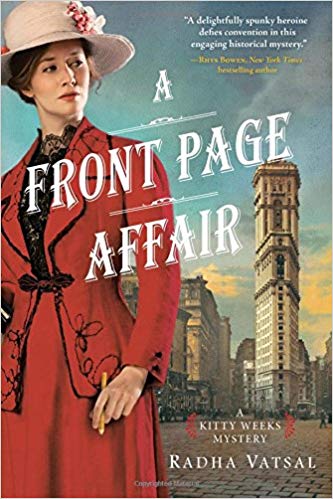
Verdict: Read all about it!
Capability Weeks, a young woman of nineteen, works for the editor of the Ladies’ Page on the stuffy and staid New York ‘Sentinel’ newspaper in 1915. She and her father, Julian, have only recently returned to the States after decades abroad in Europe and Asia. That experience gives her the caché to land the newspaper job but leaves her unprepared for the manners and mores of the time and place. Though the pair are comfortably well off, Mr Weeks grudging approves of Capability’s work, provided it in no way interferes with her home duties, which fall to her because her mother and his wife died years ago. Later in the book, this need to run the home comes into conflict with her journalistic ambitions.
It was a time of breakneck economic growth, raging war in Europe, submarine attacks in the Atlantic, and a tsunami of immigrants. A volatile mix in the making.
Because it is new to her, Capability observes New York City and its denizens with interest, the skyscrapers, the wind tunnel streets, the underground subway, the class snobbery, the social distance between classes, the profusion of newspapers. All of this brought to the mind the two great chroniclers of the Gilded Age (1880-1917), as the period was later called, Henry James and Edith Wharton, and Capability is no match for either of them. It was a time of rapid economic growth that promised to go on forever, with it streamed millions of immigrants arriving at this new Eden every year. At the same time stupendous wealth was concentrated in the railway and banking barons, a few of whom appear in these pages. (Aside, one of these lesser magnates endowed Duke University where the author of this book obtained a PhD.)
One day the Ladies’ Page editor is indisposed, and sends this ingenue in her place to an elaborate garden party with Japanese daytime fireworks. (A new idea to me which is fully explained in a Wikipedia entry.) While passing among the great and the (not so) good at the party Capability studies them, and has an unpleasant encounter with the penniless scion of a once great fortune, Hunter Cole and his burlesque dancer wife. Capability and the wife hit if off, both being fish out of water in this set. Cole is a rude and crude bore, despite his illustrious forbears. Think of a radio shock jock and there you have him. Seasoned krimi readers will have no trouble in picking him as the first to go, and he does — good riddance — during the fireworks display. Capability may have been the last to see him alive and the first to see him dead.
Because she was there the newspaper editor reluctantly assigns her to assist the male journalist covering murder, but in a very circumscribed role suitable for a woman. She chaffs at that, the more so when she sees how superficial the male journalist approaches the subject. (Ahem, what’s new.)
However the police investigation applies the standard operating procedure of the time and blames Hillary Clinton. (Just joking to see if the reader is paying attention.) No the SOP is to find the nearest immigrant who barely speaks English, in this case an Italian stable hand, and pin the crime on him and beat a confession out of him. This satisfies the police and the journalist, but Capability finds it a long bow.
The book is rich in the detail of life in that rarefied stratum, time, and place, which is seen afresh, if not with the wit and insight of James or Wharton. For example, Capability is assigned an interview with Miss Anne Morgan (yes, of that Morgan family) about her book ’The American Girl: Her Education, Her Responsibility, Her Recreation’ (1915) who like a Hollywood star today displays celebrity compassion for working women. However Capability and this reader, too, found Miss Morgan to be streets ahead of them. That was refreshing. In so many krimi writers there is the ambition to write social criticism by portraying others, especially the rich, the famous, the successful, as grasping dunderheads and imbeciles. Not so here. Miss Morgan knows herself, including her own blind spots. Woe to a journalist who tries to trip her up.
Likewise Capability’s chance encounter with a German diplomat is very well presented. He may be up to shady things but he is no cardboard stereotype, and when called to account for his actions, makes a cogent statement.
Another compensation is the broader canvas the novel offers, no character in a James or Wharton book ever spoke to a stable hand, an Italian immigrant, or visited the Tombs (if one does not know what this is, look it up because it still exists, or did when I saw it in 1980).
In this era everyone is addressed in every exchange by title, thus ‘Miss Weeks.’ While I am sure that is accurate, it is tedious to read, like those rituals of formality that plump up Alexander McCall Smith’s slender stories. The constraints on women are many and they are made apparent but not to a didactic drumbeat of hindsight such as is found in other krimis that want to offer a discounted, hindsight social criticism, i.e., for the author to display peacock feathers of virtue.
The author distinguishes characters, offers their distinct perspectives, and steers on without losing focus. This is the first in a series.

Radha Vatsai
Bones to pick, I have a few, somewhere along the way Capability becomes Kitty to friends and family. Yes, the name does refer to the gardener though why did not register with me.
Ellen Wilkinson, ‘The Division Bell Mystery’ (1932)
GoodReads metadata is 256 pages, rated 3.57 by 132 litizens
Genre: Krimi, sub-species Locked Room murder.
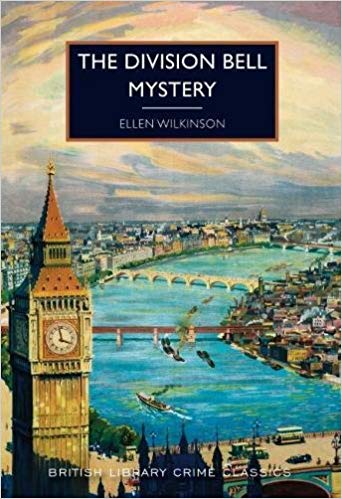
Verdict: More, please.
In the hallowed halls of Westminster a financier sits down to dine tête-à-tête with his old friend, the Home Secretary in a private room. The subject of conversation will be money, a lot of it for the Exchequer is at low tide. But before the Home Secretary can pop the question of a gigantic loan, the division bell rings and off he goes to the floor of the House of Commons to cast his vote, leaving Money Bags alone in a closed room with an attendant outside. Yes, I know, not literally a locked room but near enough.
When the Home Secretary, famed both for this stupidity and honesty, the former, say the wits, explains the latter, returns to dinner he finds Money Bags shot dead!
While Scotland Yard puts in an appearance, a young parliamentary secretary is drafted to investigate the nooks and crannies of Westminster where no plod is likely to make headway. The Tory government is already rocky and this murder could send it to the bottom in no time, unless there is a quick resolution that clears the air. More generally the murder of a major financier does not enhance the reputation of England as a safe investment to other financiers!
As a guide to the topography of parliament of the time, this is Baedeker in all but name. It comments on the accommodation, the food, the time to get from one place to another, the friendliness of locals, the standard of service. and so on.

The author was a Labor MP and she has an eye for details, and the wit for satire, all of which is well judged. Just enough to taste but not too much to jade.
It is far superior to J V Turner’s ‘Below the Clock’ set in the same time and place, discussed elsewhere on this blog. This leaden title is rated higher at 3.64, such is the idiocy of the species.
‘The 7th Function Language’ (2015) by Laurent Binet.
Good Reads meta-data is 383 pages, rated a measly 3.7 by 2515 litizens.
Genre: Libel, krimi
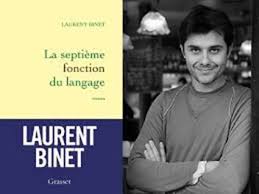
Verdict: How did it get published!
Paris, February 1980. Roland Barthes (1915–1980) noted obscurantist, died in a street accident. But was it an accident? Did he die then or later? Indeed, what is death?
Why were Bulgarians there on the zebra crossing? Where is the notebook that Barthes always carried with him as he read the signs? (But evidently not the one in front of him which said ‘Ne march pas.’) What are the six functions of language? Why are several witness short of fingers? Is Michel Foucault (1926 -1984) completely nuts? Why do those two over there always carry umbrellas? Did the Gulf War occur? Such a lot of questions, it must be a seminar.
The President of the Republic himself assigns the investigation of this accidental death to Commissar Jacques Bayard! A traffic accident! ‘Moi, one of the most experienced detectives since Maigret, saddled with a street accident,’ thinks Bayard. Sacré bleu!
Bayard soon finds that he has landed on Mars. As a representative of the repressive state apparatus in his crumpled Bon Marché polyester suit, driving a clapped-out deux chevaux, bearing chronic shoulder pain from a stab wound inflicted on him by a doped-up junkie, smoking cheap cigarettes, no intellectual will speak to him. They all delight in reviling him in polysyllabic words while proclaiming their humanity.
In addition to Foucault (who is completely nuts) he meets Gilles Deleuze (1925-1995), Jacques Lacan (1901-1981), Louis Althussier (1918-1990), Phillippe Soller (1936-) , Julia Kristeva (1941-), Bernard-Henri Lévy (1948-), Jean Baudrillard (1929-2007), Jacques Derrida (1930-2004), Jean-François Lyotard (1924-1998), and their acolytes. Bayard cracks a tooth clenching his jaw while trying to get one of these useless clowns to answer a simple question. He resists the temptation to slap them around. Though his self-control weakens when he remembers the good old days in Algeria when a slap was the start of an interrogation in a basement room that could be hosed out later.
To navigate this world of extra-terrestrials Bayard press-gangs a cicerone and translator, a Phd student from the mud heap of Vincennes, Simon Herzog, and off this mismatched pair goes: First to Bologna to interview the master reader of signs, semiologist Umberto Eco (1932-2016) who can tell them nothing useful at great length. In Bologna they also cross paths with the Red Brigades, happily murdering by-standers while shouting clichés. And behind the moustaches are more Bulgarians.
Then on to Ithaca….
How Binet managed to publish this libellous and delightful book is the real mystery here. Though the great intellectuals he parodies were often so ridiculous only a PhD could take them seriously, Binet’s achievement is to make them even more absurd than they made themselves. Who would have thought that was possible. Of course the joke is on all those PhDs who incant their names with reverence. This is all the more surprising considering both the grim subject and gritty style of his previous novel ‘HHhH’ (2010).
This is most singular book I have read in ages.
‘Old Flames’ (2003) by John Lawton
Good Reads meta-data is 529 pages, rated 3.9 by 759 citizens
Genre: Krimi
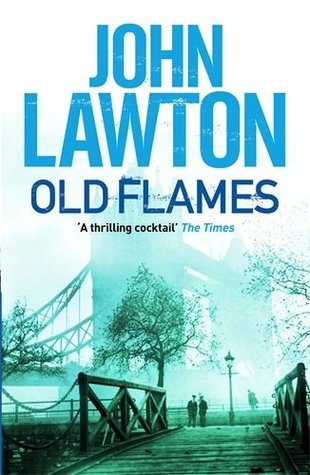
Verdict: Oh hum
Another in a long series of the adventures of Inspector Fredrick Troy. In it he crosses the path of Kim Philby’s network of Soviet spies in England. As always in these krimis Troy finds incompetence vying with corruption in the English policing, politics, and society. He, like Christopher Foyle, is alone virtuous. All other are fallen.
Troy continues to feel sorry for himself though the early years of the Cold War in 1956. He combines upper class snobbery with world weary ennuni. He is a man of many parts. On the one hand every short-changing newsagent sets him off on the lecture about the corruption of the British, while on the other he accepts or ignores his brother-in-law’s admission of murder, his wife’s years as a Soviet agent whose work no doubt took lives, and a traitorous old school tie. The sanctimonious Troy evidently sees no contradiction in any of this hypocrisy. There is, alas, no reason to think any of this is ironic.
There are estimates that the information Philby supplied to the KGB led to the torture and murder of about sixty individuals, and the imprisonment of more. The victims were largely anti-Soviet nationals in Central and Southern Europe. None of these events bothers Troy as much as a Special Branch officer demanding to see his ID.
In character Troy is exactly the sort of disaffected child of privilege that the Soviets recruited. This is an irony beyond the author’s ken.
The plot is intricate but it takes a millennium for it to evolve. Every page is padded with lengthy and pointless descriptions, e.g., of the cracking brickwork of a train station, or the clothes of woman. I gave up reading most of this descriptions since it did not contribute to plot or character.
It is well-written true. The plot, when it finally emerges, is neat. The characters are diverse. But…. well, it seemed like a very long short story that went nowhere for scores of chapters. I flipped through a third of it without losing the thread. Maybe more. Nor did I feel like I was missing anything.
There are discussions of other Lawton titles on this blog. Seek and find.
‘The Kingdom of Light’ (2009 ) by Giulio Leoni
GoodReads meta-data is 324 pages, rated 2.9 by 108 litizens.
Genre: Krimi
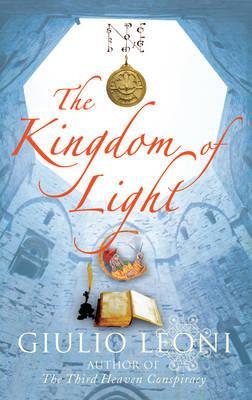
Verdict: Dan (Brown) started here.
The sleuth in change of the City of the Flower in the year of their lord 1300 is Dante Alighieri (1265–1321) is called to the site of a ruined ship in the marshes of the Arno with a manacled and dead crew. Is this a life boat from the Mary Celeste, or what? Turns out it is ‘or what.’
Florence is ruled by a small but typical committee — shutter! — whose members are Priors, and Dan is one of them. The others are busy with training seminars, bickering over trivialities, and writing this service onto their CVs while not raising a finger. See, it is a typical committee. Only Dan does any prioring work.
He finds on the ghost ship a strange clockwork, which he conceals, least some zealous churchman declare it devilish and destroy it. There is a lot of that around, i.e., churchmen declaring sliced bread the work of the devil, and devouring it least humble people be corrupted.
It seems the Catholic Church has never changed. It loudest exponents are the first to become corrupt to save the humble people from it. If that is too cryptic, think choir boys.
Dan noses around annoying everyone. Florence is full of travellers, many on pilgrimages to the Holy Land, and others to AC Milan away games. They are united by Latin and soccer. Then the murders begin among a group of those travellers. The plot got so thick this reader could not stir it.
Meanwhile a charlatan, no relations to Heston, is gulling credulous Republicans with a new Crusade to build a wall. They throw money at him which he happily collects. When Prior Dan sets out to unmask this scoundrel he finds a deeper and darker plot that harks back to the War of Guelphs and Ghibellinis. This conflict was largely familial though various doctrinal and territorial claims were made to cloak the tribal battle for precedence.
Dan is much less inclined than his fellow committee Priors to accept supernatural explanations for everything and even less inclined to favour destroying anything unusual as the devil’s work. The author brings home the suffocating and hypocritical environment of the time and place very well. While Dan is pious he sees all as part of the divine plan and wants to understand it, not whack it with a sword.
The last great Holy Roman Emperor was Frederick II (1194–1250) of Sicily who was very much larger than life. He travelled widely in the constituents of the Empire and promoted alchemy, astronomy, astrology, and the other arts and sciences of the age. The pope denounced him as the anti-Christ for this support. Freddy also negotiated with Saracens about access to the Holy Lands, and that made him anathema to the Pope. ‘Negotiation, never! The sword, always!’ cried the Pope in the name of the Prince of Peace.
When the Papacy prevailed and Freddy died, it grew avaricious and bloated, and by Dan’s time it was an enemy of Florence, seeking always to extend its grip on the secular city through the sectarian cloisters that abound in the city. (When I spent a semester at the European Universities Institute in Florence I had an office in a one-time monastery. Pretty grim.)
After the Guelphs defeated the Ghibs in 1294, a battle in which Dan distinguished himself, they then split among themselves into Black Guelphs and White Guelphs. The losers of this interniacine conflict went to Ontario where it was a balmy -2 degrees Fahrenheit when I checked this minute. Again the conflict was familial and personal rather than theological or ideological, though inevitably the contestants sought allies on these latter grounds.
The to’ing and fro’ing and the manners and mōres of high medieval Florence are interesting but confusing to the neophyte like me. I never did quite figure out what the point of it all was but nonetheless I will try to SPOIL(ER) it for readers!
The plotters were trying to rekindle the Ghibs. The purpose of the take over was to reclaim Freddy’s mirrors which his court astronomer had made to observe the transmission of light. This was sacrilege because light was God’s creation, or something. So it all had to be done in secret, in the dark. Get it? Why all this had to be played out in Florence was lost on this reader. But the mirrors were the cargo of wrecked ship. Secrecy required the whole crew to be murdered. [Gulp.] UPS could have delivered without all that. Not sure about DHL.
Dotted throughout the text are passages from and references to Dan’s masterwork, the Comedy, which took the name Divine after his death. I have listened to most of it in an Audible book while dog walking years ago. I once met John Ciardi, the foremost English translator of Dan, in that memorable 8 am poetry class that seemed like a good idea for the first and last time at registration.
 Giulio Leoni
Giulio Leoni
There a number of titles in this series and I read another one a long time ago. Like this one, I found that one intriguing but confusing. Don’t suppose I will rush to find another title, but if another crops up I would most likely add it to the Kindle.
Wikipedia tells us that Dan’s family was loyal to the Guelphs, a political alliance that supported the Papacy in opposition to the Ghibellines, who were backed by the Holy Roman Emperor. To pursue a political career the young Dan had to join a guild and the easiest entrance exam was pharmacy so he did that. It made some sense, because apothecaries in those days and for centuries to come also sold books, at first DIY book on diet and health, but others, too. That fits with bookish Dan.
‘A Man with One of those Faces’ (2016) by Caimh McDonnell
GoodReads meta-data is 362 pages, rated 4.1 by 2252 litizens.
Genre: Krimi
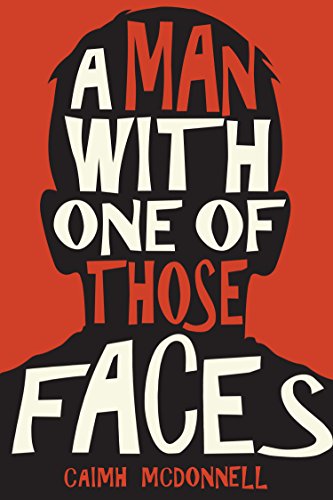
Verdict: Craic!
Slacker Paul ekes out a living in contemporary Dublin by doing six-hours of charity work a week. As long as he does this work a stipend from his late, fabulously wealthy aunt, who despised him, gives him a bare living. He was her only living relative. Her idea was that this stipend would get him started, at long last, on earning a living. She over-estimated her man, because his idea is to scrape along on that stipend. As a consumer he has learned how to make that stipend stretch to cover his very few needs. No bargain bin in Dublin escapes his notice. Most Op Shops are too upmarket for him.
Most of the gratis charity work is visiting inmates and patients at hospices and retirement (old folks) homes in and around Dublin. He has shopped around and found the best set-up, taking into account transport cost to and from, level of demands from clients, opportunities with female staff, and such. Paul is none too bright despite all his scheming. The staff at the institutions verify his work and he lets the elderly clients talk to him and he pretends to be whomever they say. He takes the chits to the lawyer managing the trust fund and gets the Euros. Simple. Too. To last.
Those patients that are assigned to him have no other visitors and are pretty confused about who any one is or where they are. He has one of those non-nondescript faces that they can project onto and he is a good listener.
Then one night, as he listens to a new client rattle on, the dying old man, Mr Brown, riddled with cancer beckons him closer to whisper weakly in his ear, or so he thinks. He moves the chair and leans forward and the old coot stabs Paul in the shoulder with a scissor blade he had secreted in the bed. What with all the tubes and wires on the old cuss the two of them get tangled and fall to the floor, killing the patient who was eighty if a day, and leaving Paul bleeding from the stab wound with additional bumps and bruises.
A routine police investigation soon discovers that the cancer-ridden client was not Mr Brown but rather Moriarty long since thought deceased in Montevideo. Whoa! Where has he been these last thirty years and what has he been doing? Who did he think Paul was that he wanted to stab him? None of this interests Paul, until….
It get worse when Paul barely escapes another much younger villain. His car is booby trapped. He is on the run! He blames the nurse who sent him to listen to Moriarty and she feels guilty enough to club together with him, because it seems someone is trying to kill her, too. Indeed anyone is a target who had anything to do with Moriarty at the hospice.
The pace is fast and furious. The throw-away lines are many. The Irish idioms are delightful. Much ground is covered in and around Dublin. Little is as it seems: The beautiful TV journalist is rancid. The upright police commissioner isn’t. The shifty cabinet minister is honest. The objectionable husband (never mind the details) is a wounded lion. The helpless shut-in is far from helpless. Even the dead are not what they seem.
Hurling figures in the story, as does Guiness so we know it is Irish.
The characters who pass in review include Bunny, the hurling coach who never bluffs, Dorothy who lied about the gun collection of her late husband, Detective Inspector Stewart who may be the last and only honest Gardià in All Ireland, pregnant lawyer Nora whose taser is illegal and all the more welcome for it, but nary a priest though the pews were near full.
Glad I read it on Kindle since I could look up the Irishisms as I went. It is the first of series of four or five titles by Caimh McDonnell.

I started the next one a few hours after finishing this one, and finished them all since I drafted this post. Craic!
‘Island of the Mad’ (2018) by Laurie King
The fifteenth in the series featuring Sherlock Holmes and his young wife Mary Russell.
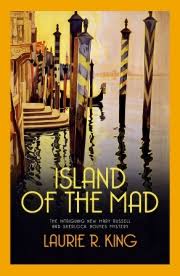
This time the dynamic duo come to the aid of Mad Woman, whose madness is to be a lesbian and have a very unpleasant brother, who in addition to sexual harassment, rape, and theft, also wears a blackshirt when visiting Italy. What a package is this straw Marquess.
But the shenanigans give occasion for Mary Russell to break into Bethlehem Royal Hospital, better known as Bedlam. Thereafter the fashion show moves to Venice and the eponymous island, Poveglia.
There the twosome meet Elsa Maxwell (1893-1963) and Cole Porter (1891-1964) of Indiana. She was born in Keokuk Iowa (been there) during a theatrical performance, and pretty much thereafter never left the stage of her own making.
 Maxwell in 1933
Maxwell in 1933
Professor Wiki describes her as a songwriter, gossip columnist, radio presenter, and professional hostess. Prof also credits her with engendering the treasure hunt and the scavenger hunt as party pastimes.
There is a nice study of Porter in these pages and his intense relationship with Linda, his wife.
 The palazzo the Porters rented in Venice. Porter once hired the Ballet Russe to entertain at a party there.
The palazzo the Porters rented in Venice. Porter once hired the Ballet Russe to entertain at a party there.
There is very little sleuthing. Though much of the plot is hidden in plain sight, and that is a nice trick. Many of the things seen and done are taken figuratively, only later to realise they were literal. Though I never did figure out what the brother in the white coat was doing, or quite how Mussolini’s wife related to things. There is also some insight into how Bedlam worked. The research shows, but alas some of its presentation is laboured.
Much too much padding about the fashions and morēs of rich and infamous in corrupt and decadent Venice of 1925. Hmm.
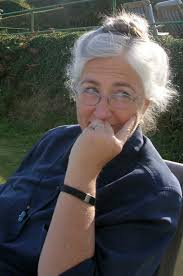
Yet it is remarkable that Laurie King has sustained this series since 1994 through fifteen titles and one collection of short stories.
